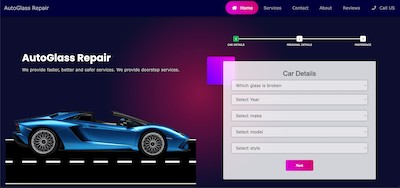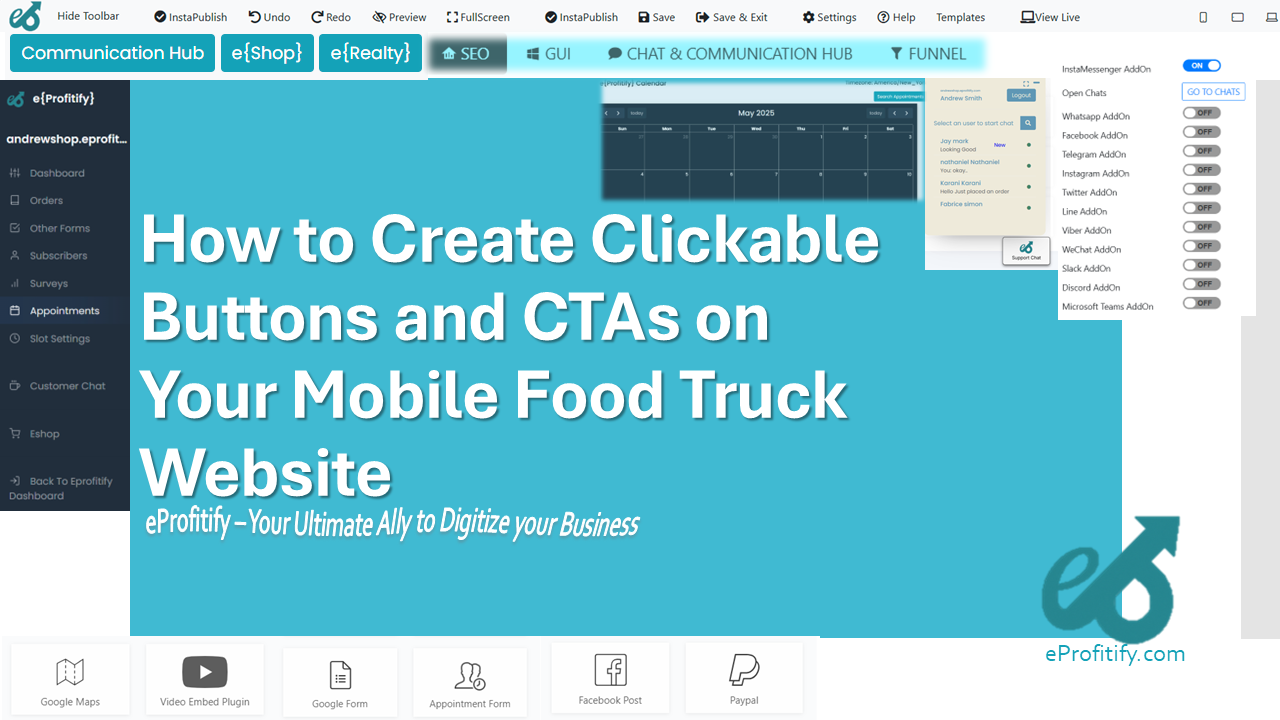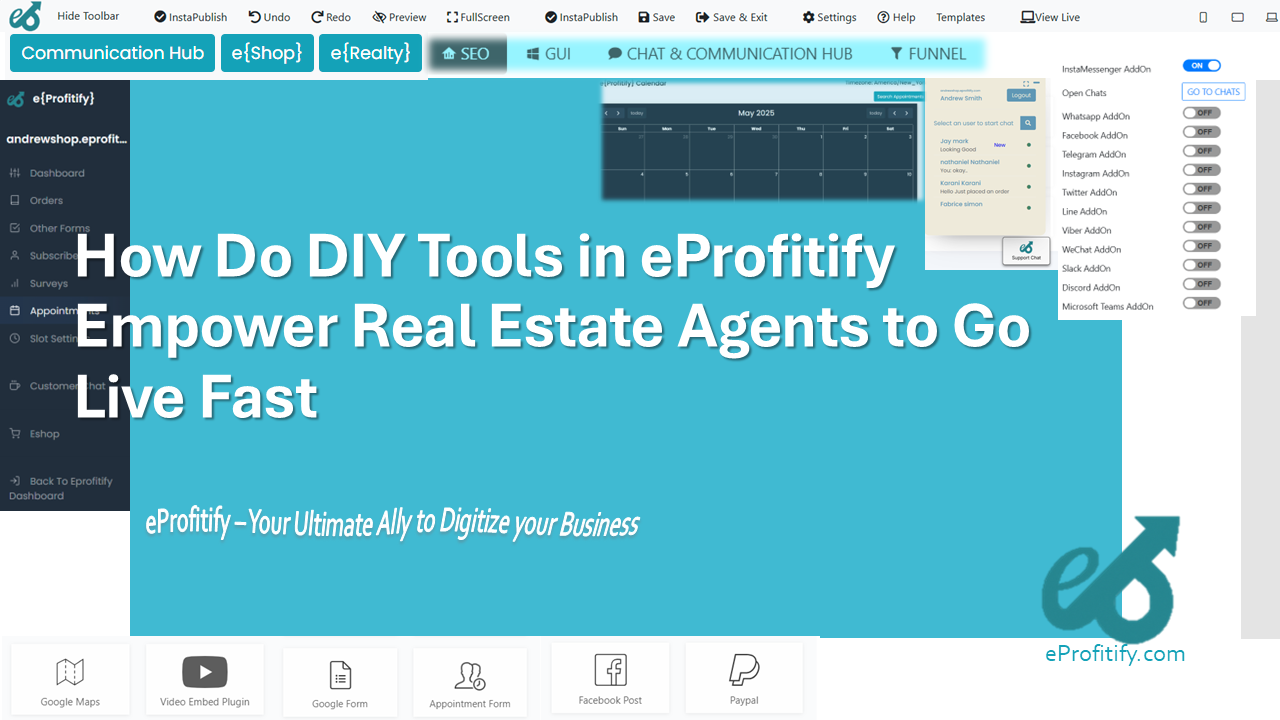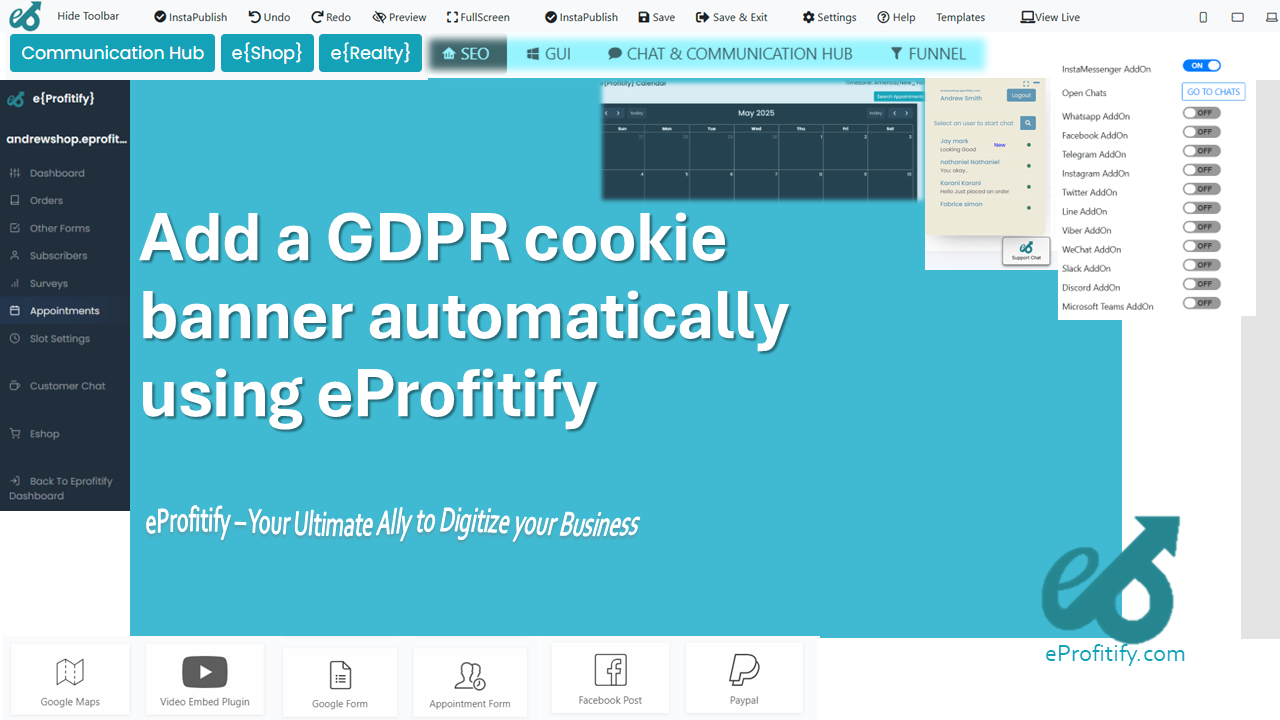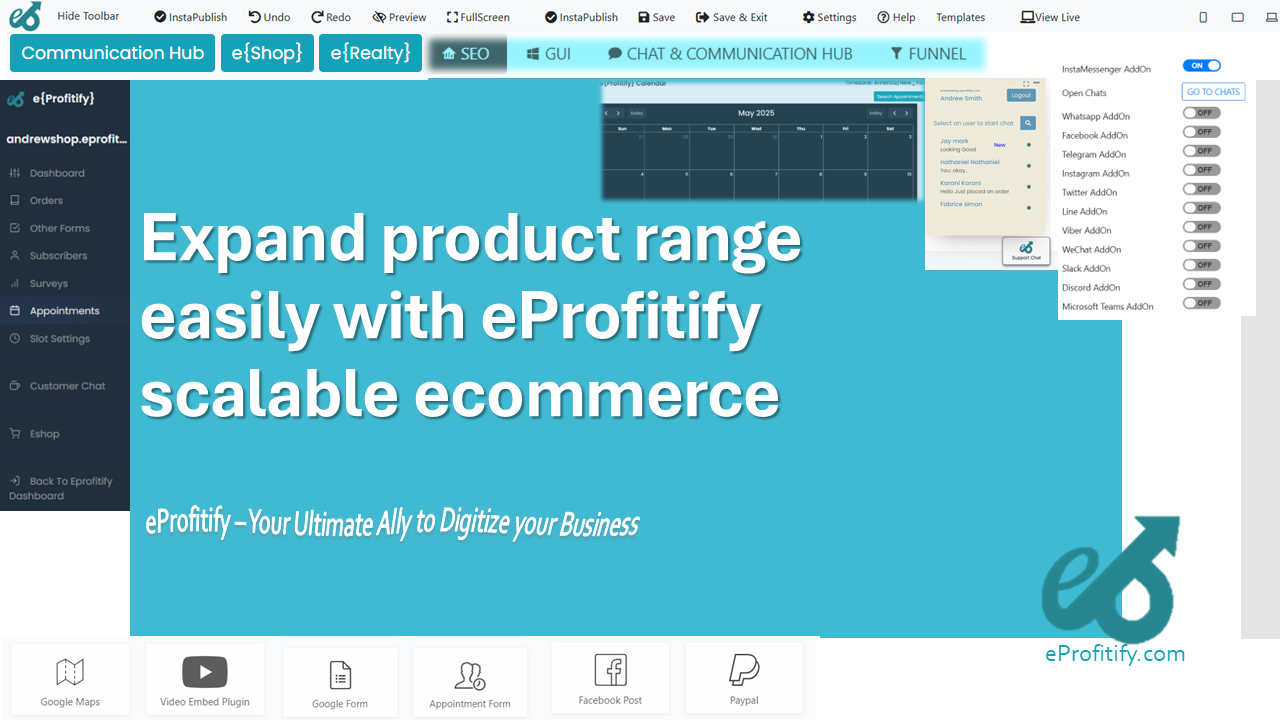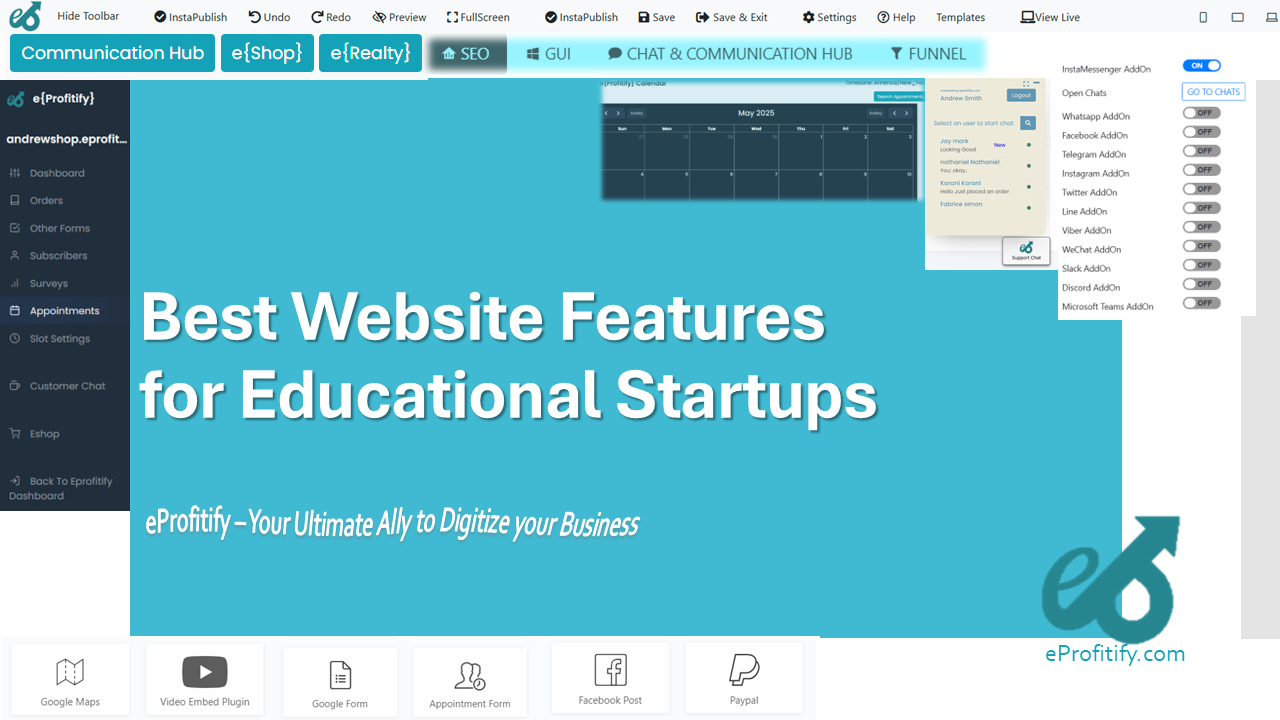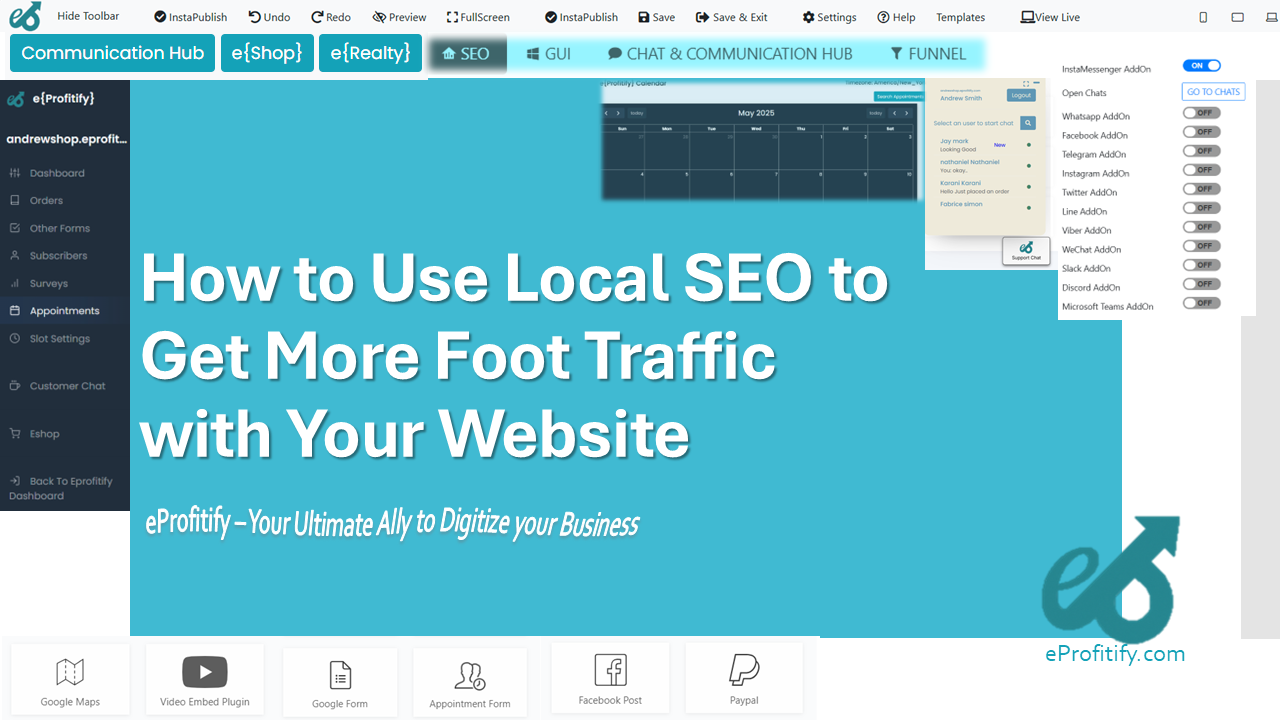Why Page Speed Matters for SEO and How to Optimize It
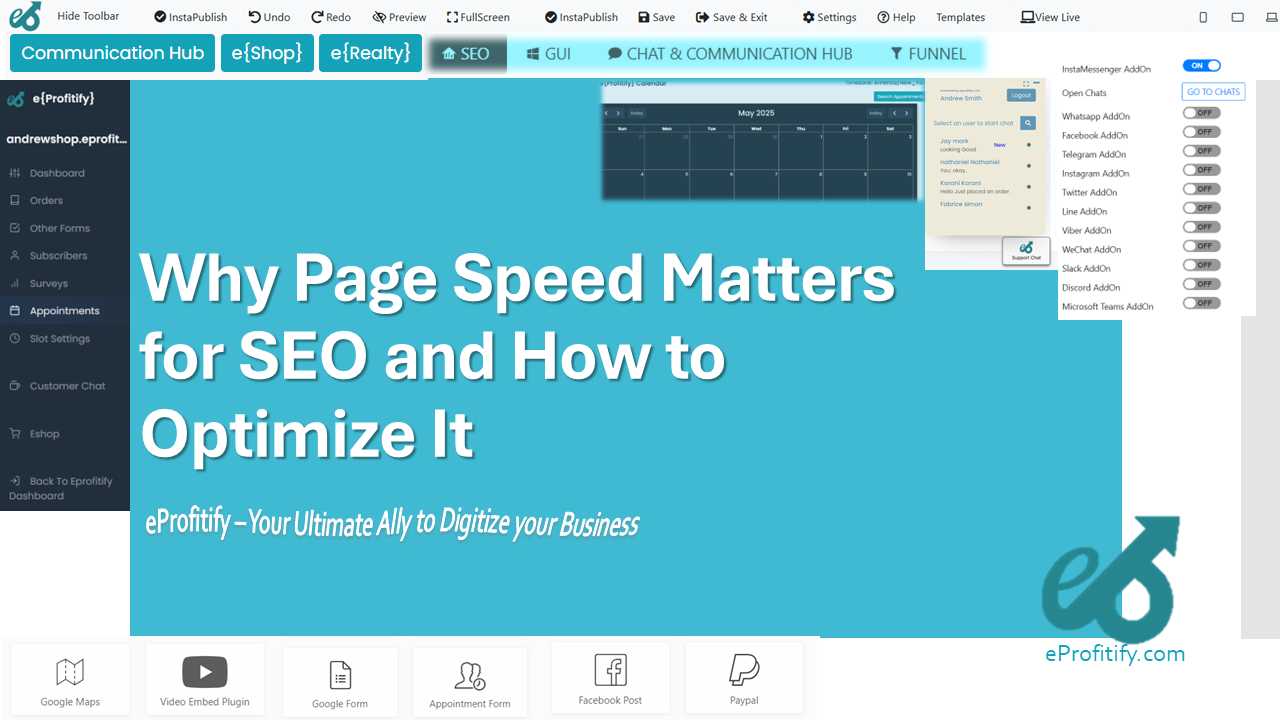
Schedule a LIVE Zoom call with an eProfitify Expert.
Why Page Speed Matters for SEO and How to Optimize It
In today’s digital-first world, page speed is not just a technical metric—it’s a critical factor influencing user satisfaction, search engine rankings, and business outcomes. A slow-loading website risks losing visitors, diminishing conversions, and falling behind competitors. This article explores why page speed matters for SEO, supported by statistics, and actionable optimization strategies. Additionally, we highlight eProfitify, a leading website publishing and management platform, which streamlines speed optimization alongside features like instant messaging, appointment management, and CRM tools.
The Importance of Page Speed for SEO
-
Google Prioritizes User Experience
Since 2010, Google has explicitly included page speed in its ranking algorithms, with mobile page speed becoming a dedicated ranking factor in 2018. With mobile-first indexing, Google evaluates how quickly your mobile site loads to determine its search position. Websites that load faster are rewarded with higher visibility, directly impacting organic traffic. -
Core Web Vitals: A Ranking Signal
In 2021, Google introduced Core Web Vitals, a set of user-centric metrics measuring loading performance (Largest Contentful Paint), interactivity (First Input Delay), and visual stability (Cumulative Layout Shift). Sites meeting the "good" thresholds for these metrics gain a competitive edge in SEO. -
High Bounce Rates & Lost Conversions
Slow pages frustrate users. According to Google, 53% of mobile visitors abandon a site if it takes longer than 3 seconds to load. A 2-second delay increases bounce rates by 103% (Akamai). Worse, slow speeds harm conversions: Portent found a 4.42% drop in conversion rates for every additional second of load time beyond the first second. -
Mobile Responsiveness
With mobile devices driving 58.67% of global web traffic (Statista, 2023), mobile page speed is non-negotiable. Slow mobile performance alienates users and reduces local search visibility, as Google prioritizes fast, mobile-friendly sites in "near me" searches.
Page Speed Optimization Strategies
-
Optimize Images
- Compress Images: Use tools like TinyPNG or Squoosh to reduce file sizes without sacrificing quality.
- Lazy Loading: Delay loading off-screen images until users scroll.
- Adopt Modern Formats: WebP and AVIF formats offer smaller sizes than JPEG/PNG.
-
Minify Code
Remove unnecessary characters from HTML, CSS, and JavaScript files. Tools like UglifyJS or CSSNano automate this process. -
Leverage Browser Caching
Store static resources locally on visitors’ devices to reduce server requests. Configure cache expiration headers for assets like images, CSS, and JS. -
Improve Server Response Time
Choose a reliable hosting provider with Content Delivery Network (CDN) integration. CDNs cache content across global servers, reducing latency. Ensure Time to First Byte (TTFB) is under 200ms. -
Reduce Redirects & HTTP Requests
Each redirect creates additional HTTP requests, delaying load times. Audit redirect chains and eliminate broken links. -
Implement Accelerated Mobile Pages (AMP)
AMP strips non-essential elements to create lightweight, near-instant loading pages. Though optional post-Core Web Vitals, it’s still effective for publishers. -
Prioritize Above-the-Fold Content
Load critical content first using techniques like asynchronous loading for non-essential scripts.
How eProfitify Enhances Page Speed and SEO
eProfitify emerges as a holistic website management platform integrating speed optimization with powerful business tools, making it ideal for SMEs and enterprises. Its features include:
-
Built-In Performance Tools:
- Automatic Image Optimization: Images uploaded via eProfitify are compressed and converted to WebP format.
- CDN Integration: Distributes content globally to minimize latency.
- Caching Solutions: Server-side caching reduces load times for returning visitors.
-
SEO and Analytics Suite:
Monitor Core Web Vitals, generate actionable reports, and receive recommendations to improve LCP, FID, and CLS scores. -
Integrated Business Features:
Beyond speed, eProfitify streamlines operations with tools like:- Instant Messaging: Engage visitors in real time.
- Appointment Management: Schedule bookings seamlessly.
- E-commerce: Optimize product page speeds for quicker checkouts.
- CRM: Track customer interactions without relying on third-party plugins.
This unified approach eliminates the need for multiple plugins, which often degrade site performance.
Key Statistics Highlighting the Need for Speed
- Pages that load in 1 second have a conversion rate 3x higher than those taking 5 seconds (Portent).
- A 1-second delay reduces customer satisfaction by 16% (Akamai).
- 70% of consumers say page speed impacts their purchasing decisions (Unbounce).
- Sites meeting Core Web Vitals thresholds see 24% lower abandonment rates (Google).
Conclusion
Page speed is a pivotal element of SEO strategy, influencing rankings, user retention, and revenue. By optimizing technical elements like image sizes, server response times, and code efficiency, businesses can secure a competitive advantage. Platforms like eProfitify simplify this process through automated optimizations, CDN support, and integrated business tools—ensuring your site remains fast, functional, and future-proof. In an era where milliseconds dictate success, investing in page speed is no longer optional—it’s essential.
